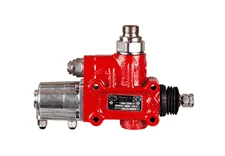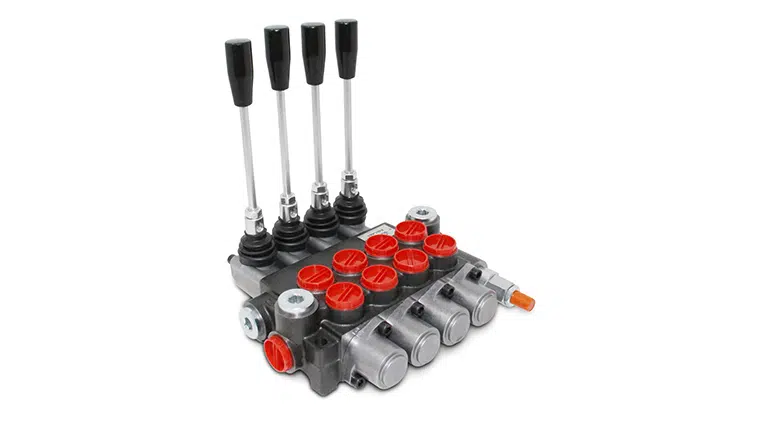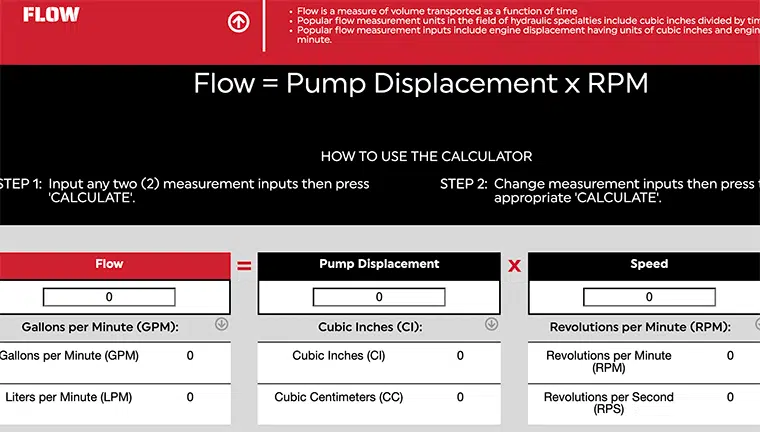Hydraulic pressure relief valves are the most common type of valve found in a hydraulic system. There are two basic types that can help prevent high pressure in the hydraulic circuit from damaging the system components.
Relief valves are normally closed. Whenever one is open, it converts the pressure energy of the hydraulic system directly to heat. High oil temperatures can also cause damage to hydraulic components, so any system designed to have the relief valve open a significant amount of the time needs to plan for heat management. In this guide, we will delve into what direct-acting and pilot-operated relief valves are and which one may be right for your hydraulics system.
- How Does A Pressure Relief Valve Work?
- What Is A Direct Acting Relief Valve?
- What Is A Pilot Valve?
- The Main Differences Between Direct Acting Vs. Pilot Operated
Hydraulic System Inc. has the hydraulic system components and parts you need to make your hydraulics run efficiently.

How Does A Pressure Relief Valve Work?
In open-loop hydraulic systems, pumps create flow and tolerate pressure, but they do not generate pressure themselves; pressure arises from resistance to flow. When work is applied, pressure rises due to this resistance. If the flow is restricted, the pressure intensifies rapidly, risking damage to system components. The primary purpose of a relief valve is to act as a safety mechanism, diverting oil flow back to the tank to prevent pressure-induced damage.
There are two basic types of relief valves commonly found in hydraulic systems: direct acting and pilot operated. Selecting the correct one can prevent issues and make your system run better. There are three types of pressure that hydraulic pressure release valves help maintain:
- Cracking Pressure: This is the pressure where the first drop of oil starts to pass through the relief valve back to the tank.
- Full Flow Pressure: This is the pressure required to allow all the pump flow across the hydraulic relief valve back to the tank.
- Reseat Pressure: This is the pressure where the relief fully closes after being open. This pressure is typically less than cracking pressure.
You need to select a valve appropriate for the flow rate your hydraulic system requires. If your relief is too small for the flow rate, you could see extremely high full flow pressures that can cause premature failure of system components.
What Is A Direct Acting Relief Valve?
A direct acting relief valve is a poppet held on a seat by a spring. The other side of the poppet is exposed directly to the high-pressure oil. Cracking pressure occurs when the pressure is high enough to start pushing the poppet off the seal. As the pressure increases, the poppet is pushed farther and farther off the seat until all the pump flow goes to the tank. This is full-flow pressure.
Direct acting valves tend to be very fast to respond to changes in system pressure. Relief speed is typically found in the literature provided by the valve manufacturer. It is measured in milliseconds (ms). There are 1000 ms in 1 second; Direct acting reliefs can be as fast as 2 ms but typically are 5-10 ms. The only way to know how fast your valve responds is to look it up in the manufacturer’s literature. Typically, the part number is marked on the body of the valve.
What Is A Pilot Valve?
Pilot pressure relief valves, also referred to as balanced relief valves, use a pressure balance to control a larger internal spool. Adjacent to the spool is a very small direct acting relief sensing the system pressure. When the internal direct acting relief cracks open, it upsets the balance holding the spool in position, which causes the spool to move, opening an oil path to the tank.
Pilot operated relief valves tend to be much slower than direct acting reliefs because it takes time for the spool to move once the balance is lost. Typically, it reacts in around 100ms, ten times longer than a direct acting relief. Once the balance is lost, the valve opens to full flow at a very small pressure differential. Crack pressure to full flow pressure with a pilot operated relief valve is typically 50-100 PSI.
Do you own a heavy-duty truck? Learn more about fluid powers for heavy-duty truck hydraulic systems.
The Main Differences Between Direct Acting Vs. Pilot Operated
Direct-acting reliefs tend to be very responsive to changes in system pressure, opening very fast. The main drawback is they tend to have a high-pressure delta between crack and full flow pressure. Depending on the size of the valve, pressure can rise 500 PSI higher than crack pressure to reach full flow. This can make it difficult to protect sensitive components from being damaged by excess pressure. Direct acting reliefs also tend to be noisy. They can make a high-pitched squeal when they are passing oil to the tank.
Pilot operated valves are typically much slower to react to changes in system pressure because of the time it takes to open the valve. The key advantage is that once unbalanced, they have a very small delta from crack pressure to full flow. Pilot operated pressure relief valves make noise as well, but it is a much duller sound that is less distracting.
Why Does Relief Speed Matter?
Having a small delta from crack pressure to full flow is very important. Hydraulic cylinders are a commonly used hydraulic actuator. When you reach the end of a stroke, the pump flow has been blocked. When this happens, the pressure in the system starts intensifying at an incredible rate, putting a lot of stress on the pump, conductors, and valves in the system.
The faster the relief opens, the lower the pressure spike will be. When hooked up to data recording systems, we have seen short pressure spikes beyond 6000 PSI on systems with functioning reliefs setting at 3000 PSI crack. These spikes occur during the 100 ms it takes to get a pilot operated relief valve open.
In many cases, the solution is to add a small direct acting relief valve to the system. It opens very quickly, limiting the pressure spike during the time it takes the slower pilot operated relief valve to open. Using both types of pressure relief in the system gives us the benefits of both. The pump takes less damage from spikes and has a much longer service life while maintaining the benefits of a pilot operated relief valve.
Hydraulic Specialty Has The Right Relief Valve For Your Hydraulics
At Hydraulic Specialty Inc., we help customers in industrial settings where noisy relief valves can be a real nuisance for the staff working around. Switching to a pilot-operated relief can eliminate the high-pitched squeal. Before going with a pilot operated relief valve, you need to determine if the pilot operated relief will be fast enough to protect the system. If you’re uncertain that your pilot operated relief valve is up to the task, your best option may be to pair it with a small direct acting relief to mitigate the damage from pressure spikes.



